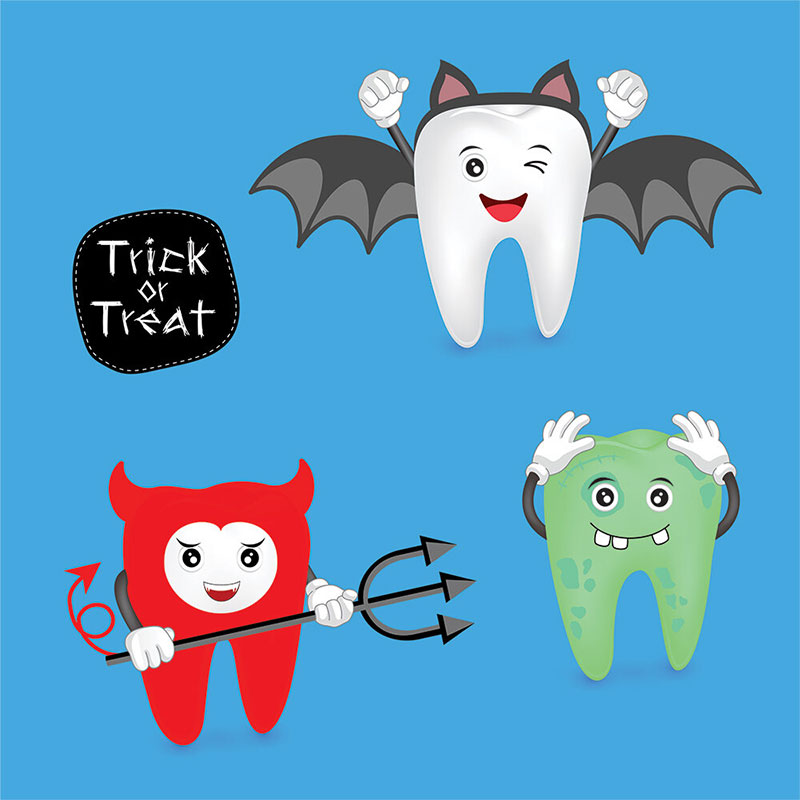Tips for a Healthy Halloween
Halloween is around the corner, which means costumes, jack-o-lanterns and a stockpile of sweets for the winter. It’s not a surprise that Halloween can present parents with a variety of health and safety challenges. The good news is it’s okay to eat that candy but it’s important to have a plan.
Here’s some tips how you can help your families oral health on Halloween and year-round.
Time It Right
Eat Halloween candy (and other sugary foods) with meals or shortly after mealtime. Saliva production increases during meals. This helps cancel out acids produced by bacteria in your mouth and rinse away food particles.
Stay Away from Sweet Snacks
Snacking can increase your risk of cavities, and it’s double the trouble if you keep grabbing sugary treats from the candy bowl.
Choose Candy Carefully
Avoid hard candy and other sweets that stay in your mouth for a long time. Aside from how often you snack, the length of time sugary food is in your mouth plays a role in tooth decay. Unless it is a sugar-free product, candies that stay in the mouth for a long period of time subject teeth to an increased risk for tooth decay.
Avoid Sticky Situations
Sticky candies cling to your teeth. The stickier candies, like taffy and gummy bears, take longer to get washed away by saliva, increasing the risk for tooth decay.
Drink More Water
Drinking fluoridated water can help prevent tooth decay. If you choose bottled water, look for kinds that are fluoridated.
Maintain a Healthy Diet
Your body is like a complex machine. The foods you choose as fuel and how often you “fill up” affect your general health and that of your teeth and gums.
Stay Away from Sugary Beverages
This includes soda, sports drinks and flavoured waters. When teeth come in frequent contact with beverages that contain sugar, the risk of tooth decay is increased.
Chew Gum with the ADA Seal
Chewing sugarless gum for 20 minutes after meals helps reduce tooth decay, because increased saliva flow helps wash out food and neutralize the acid produced by bacteria. You might even want to think about giving sugarless gum out as a treat instead of candy.
Brush Twice a Day
Brush your teeth twice a day for two minutes with an ADA-accepted fluoride toothpaste. Remember, replace your toothbrush every three or four months, or sooner if the bristles are frayed. A worn toothbrush won’t do a good job of cleaning your teeth.
Clean Between Your Teeth
Floss your teeth once a day. Decay-causing bacteria get between teeth where toothbrush bristles can’t reach. Flossing helps remove plaque and food particles from between the teeth and under the gum line.
Visit a Dentist Regularly
Regular visits to your dentist can help prevent problems from occurring and catch those that do occur early, when they are easy to “treat.” You may also consider a dentist who specializes in treating children as they may have additional training and experience in caring for young patients.

